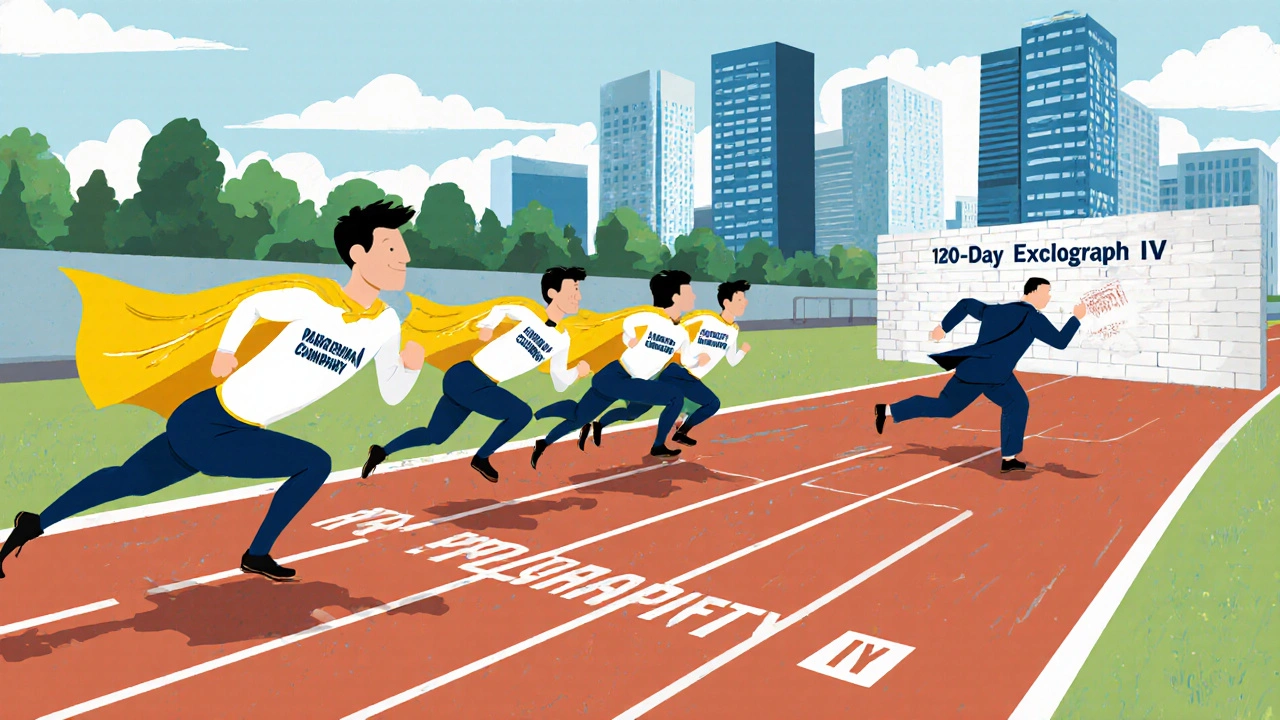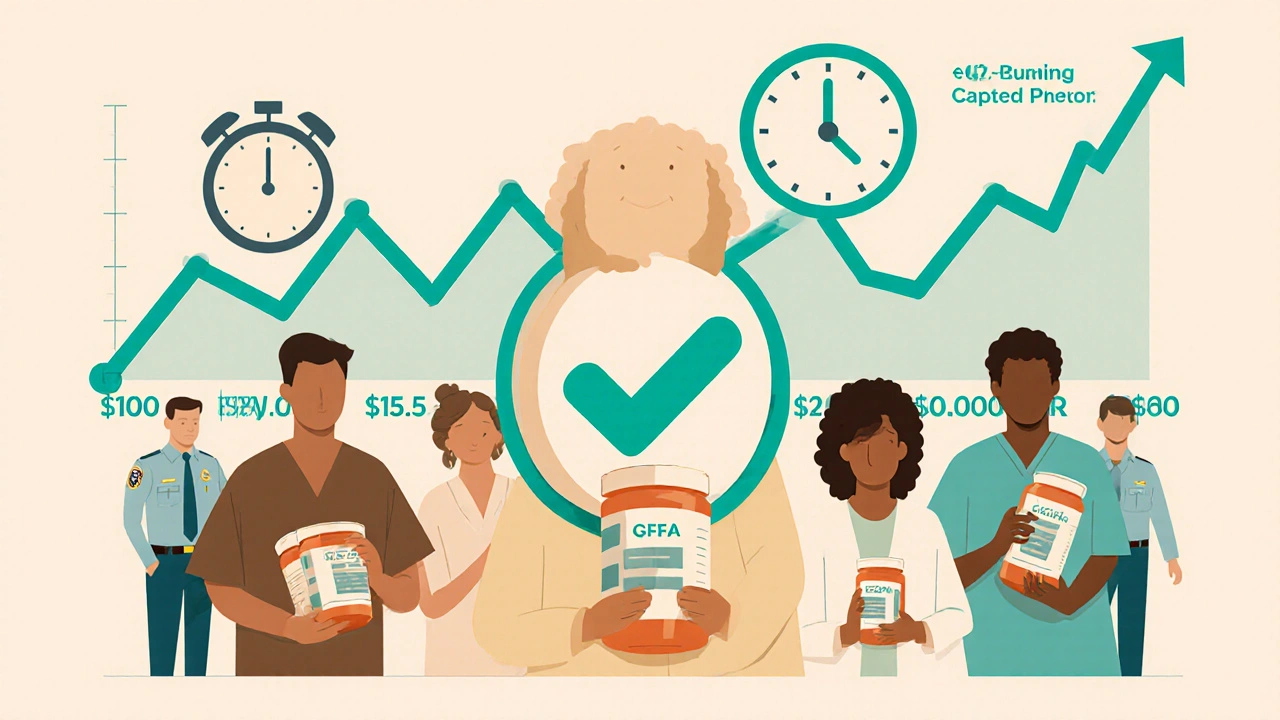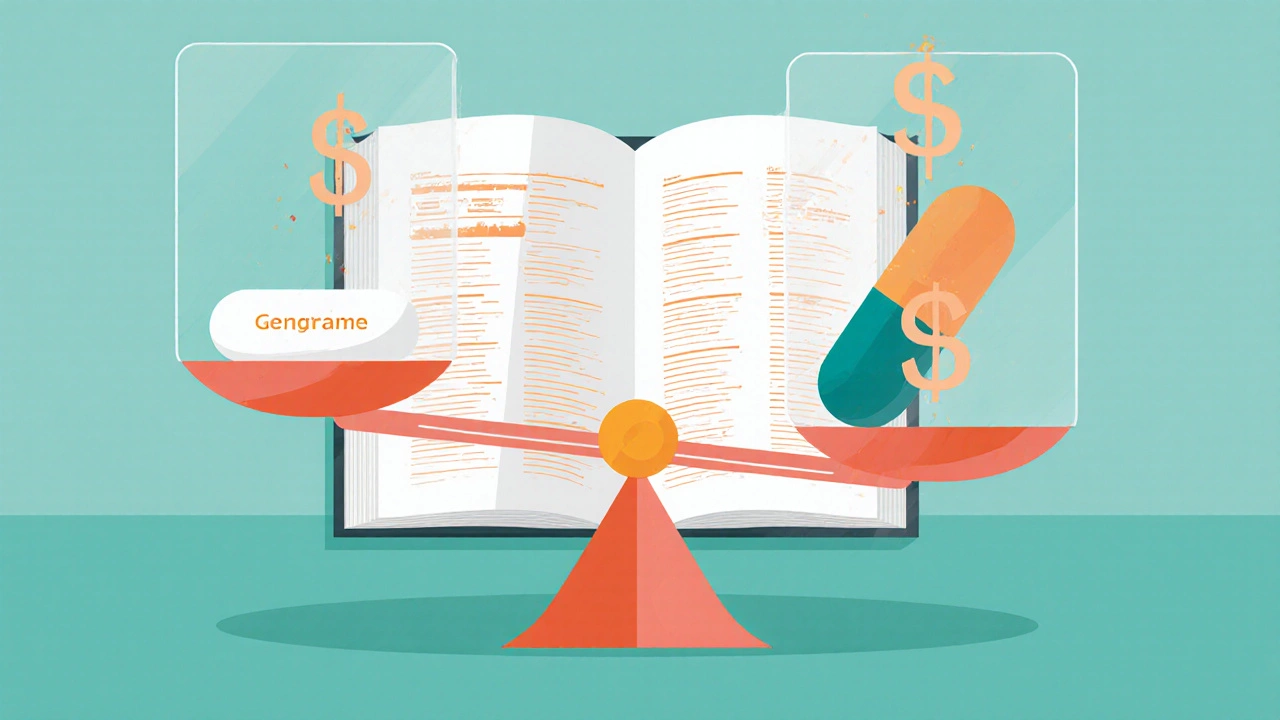The Hatch-Waxman Act didn’t just change how drugs are approved in the U.S.-it reshaped who can afford them. Before 1984, if you needed a generic version of a brand-name medication, you were out of luck. The process to get one approved was so slow and expensive that few companies even tried. That changed with a law that balanced innovation with access, and today, nearly 9 out of 10 prescriptions in America are filled with generics. This isn’t luck. It’s the result of a carefully built system designed to cut costs without cutting corners.
What the Hatch-Waxman Act Actually Did
The Drug Price Competition and Patent Term Restoration Act of 1984, better known as the Hatch-Waxman Act, solved a major problem: generic drug makers couldn’t use the safety and effectiveness data already proven by brand-name companies. Before this law, a generic manufacturer had to run its own full clinical trials-just like the original drug maker-to prove a drug was safe. That cost around $2.6 million in 1984 dollars. Most couldn’t afford it. The Act created the Abbreviated New Drug Application, or ANDA. This allowed generic companies to skip expensive clinical trials. Instead, they only needed to prove their version was bioequivalent to the brand-name drug. That means the generic delivers the same amount of active ingredient into the bloodstream at the same rate. The FDA requires that the 90% confidence interval for absorption (measured by Cmax and AUC) falls between 80% and 125% of the brand drug. That’s not guesswork-it’s science, tightly regulated. To make this work, the Act also created the Orange Book. Officially called Approved Drug Products with Therapeutic Equivalence Evaluations, it’s a public list of all approved drugs and the patents tied to them. Generic makers use this to know exactly which patents they need to challenge before launching their version.The Patent Challenge System That Changed Everything
One of the most powerful parts of the Hatch-Waxman Act is the Paragraph IV certification. When a generic company files an ANDA, it must declare its stance on every patent listed for the brand drug in the Orange Book. A Paragraph IV certification says: “We believe this patent is invalid or we won’t be infringing it.” That’s a legal challenge. Here’s why that matters: the first generic company to file a Paragraph IV certification gets 180 days of market exclusivity. No other generic can enter during that time. That’s a huge incentive. Companies raced to be first-some even camped outside FDA offices in the 1990s to submit paperwork the moment the clock struck midnight on patent expiration day. The brand-name company then has 45 days to sue for patent infringement. If they do, the FDA can’t approve any other generic for 30 months-unless the court rules sooner. That 30-month stay has been used by some brand companies to delay competition, sometimes for years. But it also gives the original maker time to defend their innovation.How Generics Took Over the Market
The results speak for themselves. In 1984, generics made up just 19% of prescriptions. Today, they account for over 90% of prescriptions by volume. Yet they cost only about 23% of total drug spending. That’s not a typo. Generics are saving the U.S. healthcare system roughly $158 billion every year. Over the past decade, that adds up to $1.7 trillion in savings. The price drop after generic entry is dramatic. When a new generic hits the market, the brand-name drug’s price often falls by 80-90% within a year. A drug that cost $100 a month might drop to $15. For patients on chronic medications-like blood pressure pills or cholesterol drugs-that’s life-changing. Medicare Part D beneficiaries save an average of $3,200 per year because of generics. That’s not theoretical. That’s money left in people’s pockets.
Who Benefits-and Who Doesn’t
Patients win. Taxpayers win. Insurers win. But the system isn’t perfect. Brand-name companies argue that without strong patent protection, they can’t afford to develop new drugs. They’re right to a point. The Hatch-Waxman Act also gives innovators a way to extend their patent life. If a drug took years to get FDA approval, the company can apply for patent term restoration-up to five extra years, with a cap of 14 years total market exclusivity from approval. But some companies abuse the system. They file dozens of minor patents-on packaging, dosing schedules, or inactive ingredients-to create what’s called a “patent thicket.” These aren’t breakthroughs. They’re legal barriers. And they delay generics. Another problem: “pay-for-delay” deals. Sometimes, a brand company pays a generic maker to hold off on launching its cheaper version. These settlements are legal but controversial. The FTC has challenged them, and courts have ruled some are anti-competitive. Still, they happen. And then there’s the bottleneck. The 180-day exclusivity period is meant to reward the first challenger. But sometimes, that first filer doesn’t launch right away. They sit on it. The FDA now has rules to forfeit exclusivity if the first applicant doesn’t market within 75 days of approval or if they don’t get FDA approval within 30 months of filing.What’s Next for Generic Drugs?
The Hatch-Waxman Act was built for small-molecule drugs-pills and capsules made with simple chemical structures. But today, more complex drugs are coming off patent: biologics, insulin analogs, and injectables. These aren’t easy to copy. The 2010 BPCIA created a separate pathway for biosimilars, but it’s slower and more expensive than the ANDA process. The FDA is adapting. Under the Generic Drug User Fee Amendments (GDUFA) III, launched in 2023, review times for ANDAs have dropped from 36 months in 2012 to just 18 months in 2023. That’s a big win. The agency is also cracking down on brand companies that refuse to provide generic makers with the samples they need to test bioequivalence. The 2019 CREATES Act lets the FDA step in when companies block access. Still, 283 generic drugs faced shortages in 2023. Many of those are older, low-margin drugs made overseas. Quality control remains a challenge. The FDA inspects foreign facilities more often now, but the supply chain is fragile.Why This Matters Beyond the U.S.
The Hatch-Waxman Act didn’t just transform American healthcare. It became a model for other countries. The European Union, Canada, and Australia all now have systems that let generics rely on brand data-but none offer the 180-day exclusivity or the aggressive patent challenge incentives that the U.S. does. That’s why the U.S. still leads in generic entry speed. Over 90% of brand-name drugs face generic competition within one year of patent expiration. In Europe, it can take two to three years. The lesson? If you want fast, affordable generics, you need a system that rewards challengers-not just permits them.
How to Know If Your Prescription Is Generic
If you’re filling a prescription and see a different name than what your doctor wrote, that’s normal. Generic drugs have different brand names but the same active ingredient. For example, the generic for Lipitor is atorvastatin. The generic for Nexium is esomeprazole. Your pharmacist is required to substitute unless your doctor says “dispense as written.” You can check if your drug has a generic by looking up the brand name in the FDA’s Orange Book. Or ask your pharmacist. Most generics are FDA-approved and just as safe and effective as the brand.Common Misconceptions
Some people think generics are “weaker” or made with lower-quality ingredients. That’s false. The FDA requires generics to meet the same strict standards as brand-name drugs. The same factories sometimes make both. The only difference? The inactive ingredients (like fillers or dyes) might vary slightly. Those don’t affect how the drug works. Another myth: generics take longer to work. No. Bioequivalence testing ensures they work at the same rate and strength.Final Thoughts
The Hatch-Waxman Act didn’t just lower drug prices. It gave patients power. It turned a broken system into one that rewards innovation and competition in the same breath. It’s not flawless. Patent abuse, delays, and supply issues still exist. But without it, millions would still be paying hundreds of dollars a month for medications that could cost $10. The law is 40 years old, but it’s still the backbone of America’s access to affordable medicine. And as long as there are people who can’t afford their prescriptions, its mission remains urgent.What is the ANDA process under the Hatch-Waxman Act?
The Abbreviated New Drug Application (ANDA) is the streamlined process the Hatch-Waxman Act created for generic drug approval. Instead of running new clinical trials, generic manufacturers submit data proving their drug is bioequivalent to the brand-name version-same active ingredient, strength, dosage form, and route of administration. The FDA compares absorption rates using pharmacokinetic studies, requiring 90% confidence intervals for Cmax and AUC to fall between 80% and 125% of the brand drug. This cuts approval time and cost dramatically.
What is the Orange Book and why does it matter?
The Orange Book, officially titled Approved Drug Products with Therapeutic Equivalence Evaluations, is a public list maintained by the FDA that includes all approved drugs and the patents associated with them. Generic manufacturers use it to identify which patents they must challenge before launching their product. Without this transparency, generic companies couldn’t know when they’re legally allowed to enter the market. It’s the roadmap for competition.
What is a Paragraph IV certification?
A Paragraph IV certification is a legal statement made by a generic drug applicant asserting that a patent listed for the brand drug is either invalid or won’t be infringed by the generic product. This triggers a patent challenge. The first company to file a Paragraph IV certification gets 180 days of market exclusivity, which is a major financial incentive. About 90% of these certifications lead to lawsuits from brand-name companies.
Why do some generic drugs cost more than others?
Price differences among generics come down to competition. If only one or two companies make a generic, prices stay higher. Once five or more manufacturers enter the market, prices often drop by 80-90%. Some generics are also harder to make-like complex injectables or extended-release pills-which limits competition. Supply chain issues and manufacturing problems can also cause temporary price spikes.
Can a generic drug be unsafe compared to the brand?
No. The FDA requires generics to meet the same quality, strength, purity, and stability standards as brand-name drugs. They must be bioequivalent-meaning they work the same way in the body. The same manufacturing facilities often produce both. Differences in inactive ingredients (like dyes or fillers) don’t affect safety or effectiveness. If a generic fails testing, the FDA pulls it from the market.
What’s the difference between Hatch-Waxman and the BPCIA?
The Hatch-Waxman Act applies to small-molecule drugs-pills and capsules made with simple chemical structures. The Biologics Price Competition and Innovation Act (BPCIA), passed in 2010, created a separate pathway for biosimilars, which are copies of complex biological drugs like insulin, cancer treatments, and autoimmune therapies. Biosimilars require more testing than generics because they’re made from living cells, not chemicals. The approval process is longer and more expensive, and there’s no 180-day exclusivity.
How has the FDA improved generic drug approvals since 2020?
Under the Generic Drug User Fee Amendments (GDUFA) III, launched in 2023, the FDA has reduced its average ANDA review time from 36 months in 2012 to 18 months in 2023. The agency also increased inspections of foreign manufacturing sites, improved communication with applicants, and cracked down on brand companies that block access to reference samples needed for testing. These changes have sped up generic entry and increased competition.
